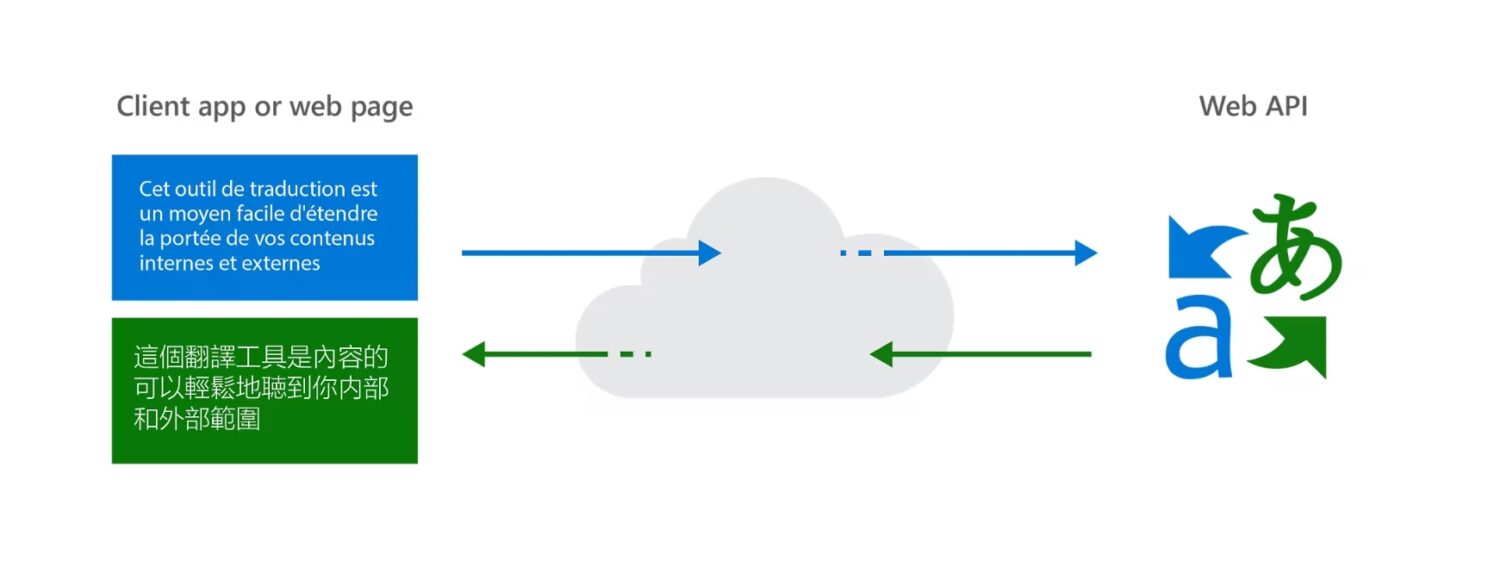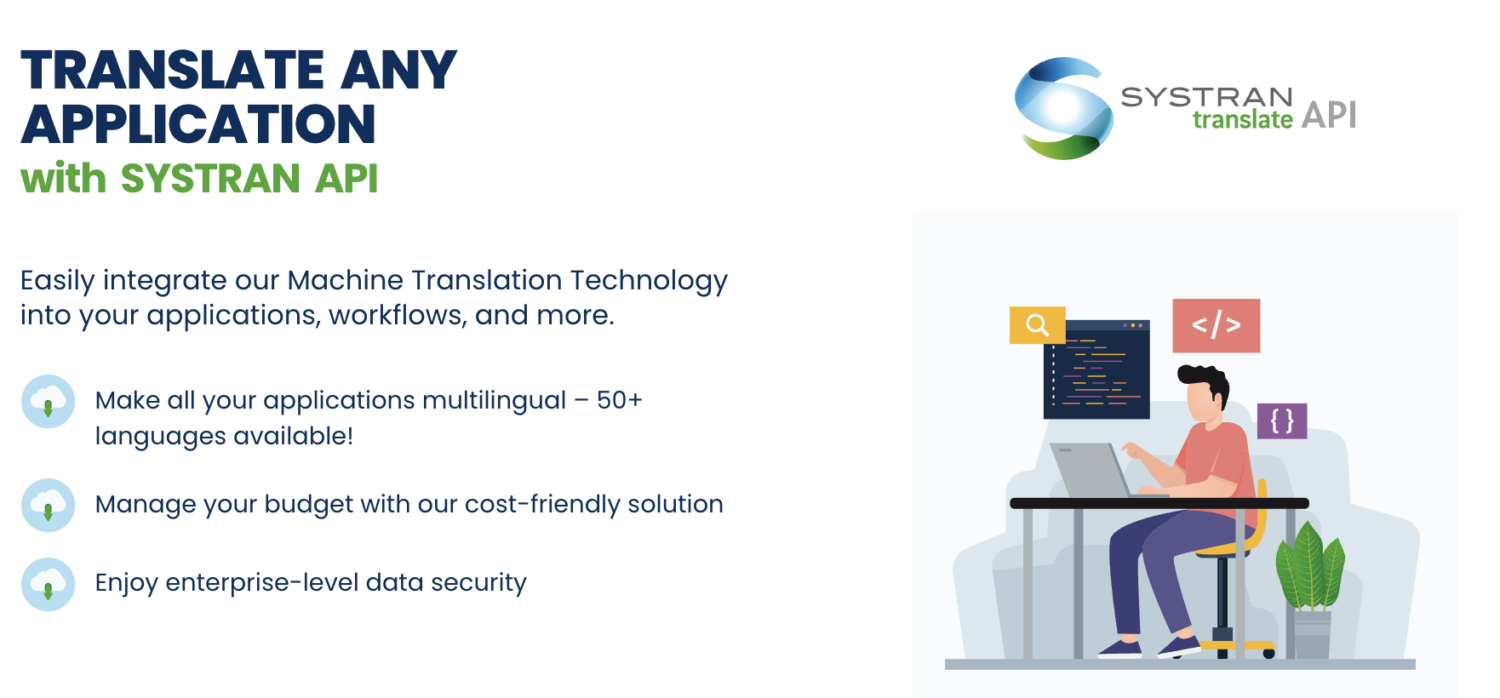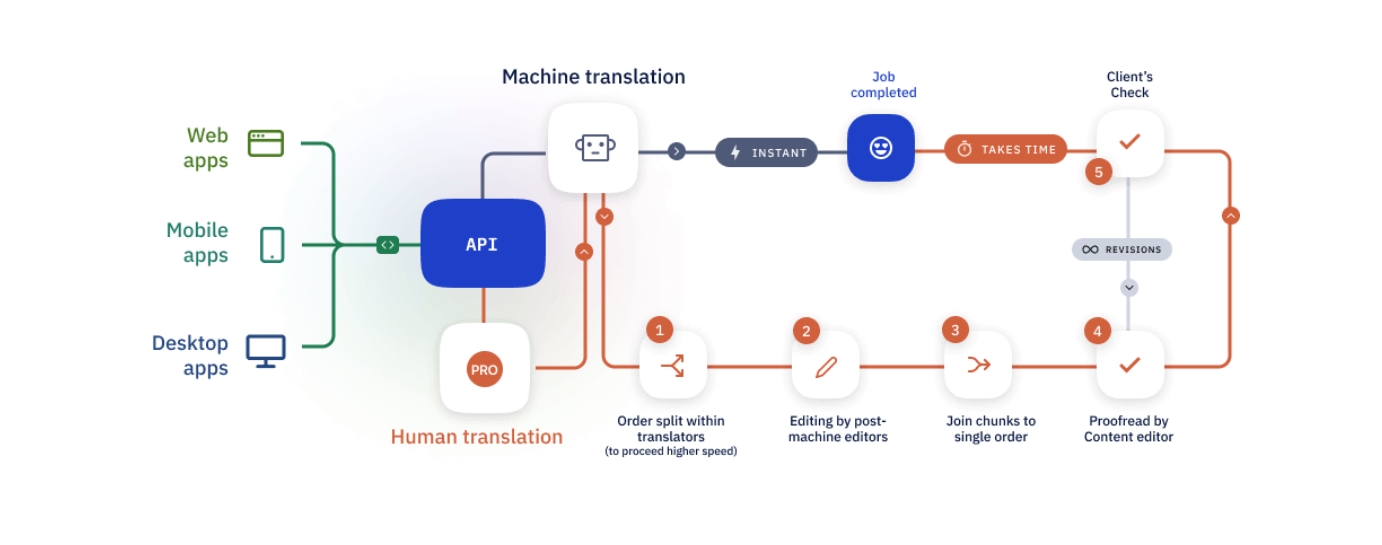We earn commission when you buy through affiliate links.
This does not influence our reviews or recommendations.Learn more.
To reach a global target audience, businesses must make their products and services accessible in multiple languages.

But how can they do so?
Isnt it exhausting to create multiple pages for every language manually?
Thats where translation APIs come into action.

Want to know more about different translation APIs?
Here is a list of some of the translation API platforms.
It updates this NMT model on a regular basis to incorporate better techniques and training data.

The API can translate your content to and from around 100 language pairs with unlimited character translations per day.
Not only that, it can detect the current language automatically and translate it accordingly.
Currently, it supports around 135 languages.

It provides two editions: Cloud Translation Basic & Cloud Translation Advanced.
Azure Translator
Azure Translator is an AI service for real-time text translation.
The API for text translation is known asAzure Text Translation API, and it supports over 100 languages.

It can translate, transliterate and detect source languages.
Supported programming languages include C#, Go, Java, Javascript, and Python.
There is also ano-translatefeature, which lets you prevent a piece of text to not be translated.

The translator service offers a free plan and a pay-as-you-go option for catering to your specific business needs.
It also adheres to EU data protection laws.
DeepL offers two plans, one free and a pro plan.

With the free plan, you could only translate up to 500,000 characters per month.
The good thing about the pro plan is that its based on usage-based pricing.
One disadvantage of DeepL is that its only available inselected countries.

Also read:DeepL: A Better Alternative to Google Translate?
Yandex Translate API
Yandex Translate APIprovides all the basic features you would expect from a translation service.
It also has a playground where you could test the API.

It uses a translation service developed by Yandex itself and supports more than 90 languages.
Yandex API response is available in three formats XML, JSON, and JSONP.
The biggest disadvantage of using this API is that its very basic and doesnt include enough features.

LibreTranslate
LibreTranslateis an open-source machine translation API.
Its free for testing, personal or infrequent use and comes under an AGPLv3 license.
In terms of features, it only provides text and file-based translation using a REST API documented on Swagger.
Its a very simple API with a bunch ofsimple endpointsallowing you to get your job done.
However, it doesnt offer more advanced features and only supports around 30 languages.
you’re free to retrieve the list of supported languages by hittingthis endpoint.
It also offers a dashboard to monitor all the API requests sent to TranslationOS endpoints.
Systran provides a free trial of its API for 14 days and up to 500,000 characters.
It can also identify languages automatically if not specified.
Also, it offers both free and pay-as-you-go pricing plans catered to your specific needs.
Its interesting to note that it supports both machine as well as human translation formats.
The machine translation API supports around 90 languages, while the human translation API support only around 60 languages.
However, features such as translation glossaries and storage are only included in human translation API.
It offers free, pay-as-you-go, and custom plans for your business needs.
These APIs make it simpler to facilitate the incorporation of multilingual functionality into applications across multiple domains.
Next, check out the bestaudio translation platforms.